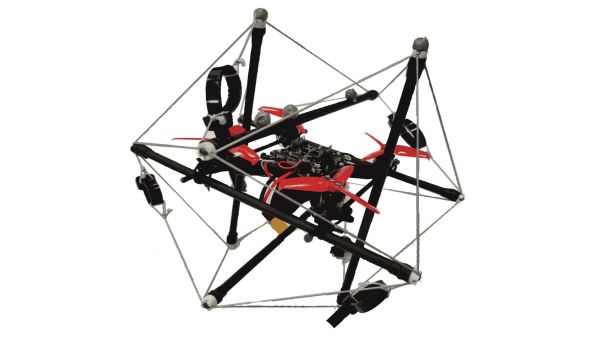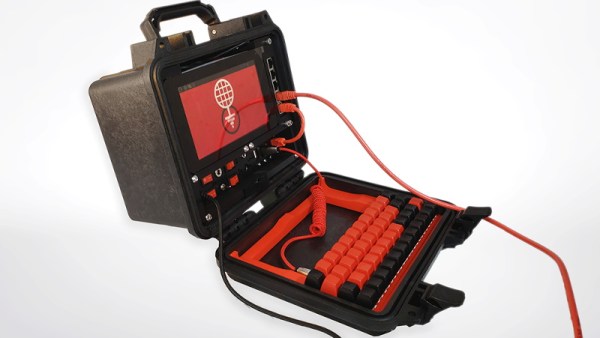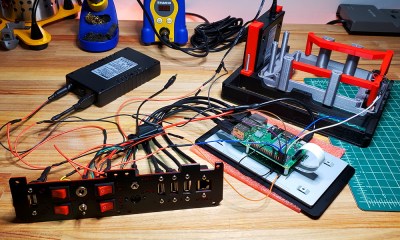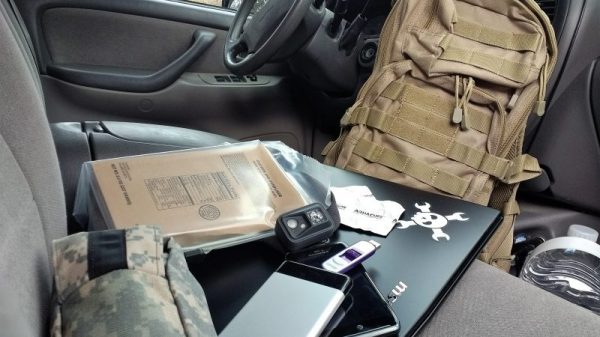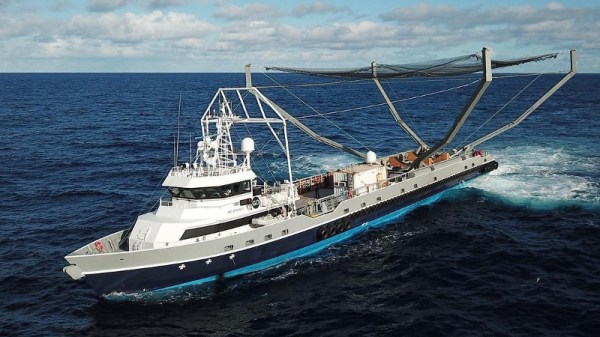Many of us have become familiar with the distinctive sound of multirotor toys, a sound frequently punctuated by sharp sounds of crashes. We’d then have to pick it up and repair any damage before flying fun can resume. This is fine for a toy, but autonomous fliers will need to shake it off and get back to work without human intervention. [Zha et al.] of UC Berkeley’s HiPeRLab have invented a resilient design to do so.
We’ve seen increased durability from flexible frames, but that left the propellers largely exposed. Protective bumpers and cages are not new, either, but this icosahedron (twenty sided) tensegrity structure is far more durable than the norm. Tests verified it can survive impact with a concrete wall at speed of 6.5 meters per second. Tensegrity is a lot of fun to play with, letting us build intuition-defying structures and here tensegrity elements dissipate impact energy, preventing damage to fragile components like propellers and electronics.
But surviving an impact and falling to the ground in one piece is not enough. For independent operation, it needs to be able to get itself back in the air. Fortunately the brains of this quadcopter has been taught the geometry of an icosahedron. Starting from the face it landed on, it can autonomously devise a plan to flip itself upright by applying bursts of power to select propeller motors. Rotating itself face by face, working its way to an upright orientation for takeoff, at which point it is back in business.
We have a long way to go before autonomous drone robots can operate safely and reliably. Right now the easy answer is to fly slowly, but that also drastically cuts into efficiency and effectiveness. Having flying robots that are resilient against flying mistakes at speed, and can also recover from those mistakes, will be very useful in exploration of aerial autonomy.
[IROS 2020 Presentation video (duration 14:16) requires free registration, available until at least Nov. 25th 2020. One-minute summary embedded below]
Continue reading “Quadcopter With Tensegrity Shell Takes A Beating And Gets Back Up”

